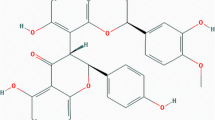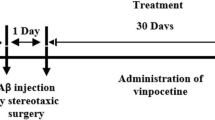Abstract
Lithium and valproate (VPA) are the most commonly prescribed mood-stabilizing drugs. Recently, several studies have reported their neuroprotective properties in several models of neural toxicity and, in some pathological conditions, large amounts of intracellular ATP can be released from damaged cells. In the present study, we investigate the potential neuroprotective effect of lithium and VPA against ATP-induced cell death in hippocampal slices of adult rats. Acute (in vitro) and chronic (in vivo) treatment at therapeutic doses with lithium or VPA significantly prevent the ATP-induced cell death. Lithium and VPA also exerted a synergic effect in the prevention of ATP-induced cell death. Moreover, hippocampal slices prepared from rats chronically treated with lithium or VPA presented a significant reduction in cell death in the presence of cytotoxic extracellular ATP. Although further investigations are necessary, our results show the neuroprotective effect of lithium and VPA against neuronal death induced by extracellular ATP, probably through a different pathway, and suggest novel uses of these drugs in neurogenerative diseases.






Similar content being viewed by others
References
Bauer M, Alda M, Priller J, Young LT (2003) Implications of the neuroprotective effects of lithium for the treatment of bipolar and neurodegenerative disorders. Pharmacopsychiatry 36:250–254
Chuang DM, Chen RW, Franaszek EC, Ren M, Hashimoto R, Seratov V, Kanai H, Hough C, Hiroi T, Leeds P (2002) Neuroprotective effects of lithium in cultured cells and animal models of diseases. Bipolar Disor 4:129–136
Harwood AJ, Agam G (2003) Search for a common mechanism of mood stabilizers. Biochem Pharmacol 15:179–189
Henion JP, El-Marsi MA, Huff MO, El-Mallakh RS (2002) Evaluation of neuroprotection by lithium and valproic acid against oubain-induced cell damage. Bipolar Disor 4:201–206
Rowe MK, Chuang DM (2004) Lithium neuroprotection: molecular mechanisms and clinical implications. Expert Rev Mol Med 6:1–8
Nonaka S, Katsube N, Chuang DM (1998) Lithium protects rat cerebellar granule cells against apoptosis induced by anticonvulsivants, phenytoin and carbamazepine. J Pharmacol Exp Ther 286:539–547
Bournat JC, Brown AM, Soler AP (2000) Wnt-1 dependent activation of the survival factor NF-kappaB in PC12 cells. J Neurosci Res 61:21–32
Bijur GN, Sarno P, Jope RS (2000) Glycogen synthase kinase-3beta facilitates staurosporine and heat shock-induced apoptosis: protection by lithium. J Biol Chem 275:7583–7590
Li R, Shen Y, El-Mallakh RS (1994) Lithium protects agains oubain-induced cell death. Lithium 5:211–216
D’Mello SR, Anelli R, Calissano P (1994) Lithium induces apoptosis in immature cerebellar granule cells but promotes survival of mature neurons. Exp Cell Res 211:332–338
Mora A, Sabio G, Gonzalez-Polo RA, Cuenda A, Lessi dr, Alonso JC, Fuentes JM, Soler G, Centeno F (2001) Lithium inhibits caspase-3 activation and dephosphorylation of PKB and GSK3 induced by K+ deprivation in cerebellar granule cells. J Neurochem 78:199–206
Hashimoto R (2002) Lithium protection against glutamate excitotoxicity in rat cerebral cortical neurons; involvement of NMDA receptor inhibition possibly by decreasing NR2B tyrosine phosphprylation. J Neurochem 80:589–597
Alvarez G, Monoz-Montano JR, Satrustegui J, Avila J, Bogonez E, Diaz-Nido J (1999) Lithium protects cultured neurons against beta-amyloid-induced neurodegeneration. FEBS Lett 453:260–264
Wei H, Leeds PR, Quian Y, Wei W, Chen R, Chuanh D (2000) Beta-amyloid peptide-induced death of PC12 cells and cerebellar granulle cell neurons is inhibited by long-term lithium treatment. Eur J Pharmacol 392:117–123
Tseng WP, Lin-Shiau SY (2002) Long-term lithium treatment prevents neurotoxic effects of beta-bungarotixin in primary cultured neurons. J Neurosci Res 69:633–641
Cimarosti H, Rodnight R, Tavares A, Paiva R, Valentim L, Rocha E, Salbego C (2001) An investigation of the neuroprotective effect of lithium in organotypic slice cultures of rat hippocampus exposed to oxygen and glucose deprivation. Neuro Lett 315:33–36
Li R, El-Mallakh RS (2000) A noval evidence of different mechanisms of lithium and valproate neuroprotective actino on human SY5Y neuroblastoma cells: caspase-3 dependency. Neuro Lett 294:147–150
Ren M, Leng Y, Jeong M, Leeds PR, Chuang DM (2004) Valproic acid reduces brain damage induced by transient focal cerebral ischemia in rats: potential roles of histone deacetylase inhibition and heat shock protein induction. J Neurochem 89:1358–1367
Vajda FJE (2002) Valproate and neuroprotection. J Clin Neuro 5:508–514
Ralevic V, Burnstock G (1998) Receptors for purines and pyrimidines. Pharmacol Rev 50:413–492
Lemmens R, Vanduffel L, Teuchy H, Culic O (1996) Regulation of proliferation of LLC-MK2 cells by nucleosides and nucleotides: the role of ecto-enzymes. J Biochem 316:551–557
Chow SC, Kass GEN, Orrenius S (1997) Purines and their roles in apoptosis. Neuropharmacology 36:1149–1156
Agteresch HJ, Dagnelie PC, Van Den Berg JW, Wilson JH (1999) Adenosine triphosphate: established and potential clinical applications. Drugs 58:211–232
Di Virgilio F (2000). The dual role of extracellular ATP. J Auton Nerv Syst 81:59–63
Ferrari D, Los M, Bauer MKA, Vandenabeele P, Wesselborg S, Schulze-Osthoff K (1999) P2Z purinoceptors ligation induces activation of caspases with distinct roles in apoptotic and necrotic alterations of cell death. FEBS Lett 447:71–75
Neary JT, Kang Y (2005) Signaling from P2 nucleotide receptors to protein kinase cascades induced by CNS injury: implications for reative gliosis and neurodegeneration. Mol Neurobiol 31:95–103
Zimmermann H (2001) Ectonucleotidases: Some recent developments and a note on nomenclature. Drug Dev Res 52:44–56
Wilot LC, Da Silva RS, Ferreira OJ, Bonam CD, Sarkis JJF, Rocha E, Battastini AMO (2004) Chronic treatment with lithium increases the ecto-nucleotidase activities in rat hippocampal synatosomes. Neurosci Lett 368:167–170
Young LT and Woods CM (1996) Mood stabilizers have differential effects on endogenous ADP ribosylation in C6 glioma cells. Euro J Pharmacol 309:215–218
Rocha E, Rodnight R (1994) Chronic administration of lithium chloride increases immunodetectable glial fibrillary acidic protein in the rat hippocampus. J Neurochem 63:1582–1584
Hassel B, Iversen EG, Gjerstad L, Tauboll E (2001) Up-regulation of hippocampal glutamate transport during chronic treatment with sodium valproate. J Neurochem 77:1285–1292
Legrand C, Bour JM, Jacob C, Capiaumont J, Martial A, Marc A, Wudtke M, Kretzmer G, Demangel C, Duval D, Hache J (1992) Lactate dehydrogenase (LDH) activity of the number of dead cells in the medium of cultured eukaryotic cells as marker. J Biotech 25:231–243
Whitaker JF (1969) A general colorimetric procedure for the estimation of enzymes witch are linked to the NADH-NAD+ system. Clin Chim Acta 24:23–27
Bruno AN, Bonan CD, Wofchuk ST, Sarkis JJ, Battastini AMO (2002) ATP diphosphohydrolase (NTPDase1) in rat hippocampal slices and effect of glutamate on the enzyme activity in different phases of development. Life Sci 71:215–225
Jiang LH, Mackenzie AB, North RA, Surprenant A (2000). Brilliant Blue G selectively blocks ATP-gated rat P2X7 receptors. Mol Pharmacol 58:82–88
Le Feuvre R, Brough D, Rothwell N (2002) Extracellular ATP and P2X7 receptors in neurodegeneration. Euro J Pharmacol 447:261–269
Dubyak GR, El-Moatassim C (1993) Signal transduction via P2 purinergic receptors for extracellular ATP and nucleotides. Am J Physiol 265:C577–C606
Amadio S, D’Ambrosi N, Cavaliere F, Murra B, Sancesario G, Bernardi G, Burnstock G, Volonté C (2002) P2 receptor modulation and cytotoxicity function in cultured CNS neurons. Neuropharmacology 42:489–501
Pap M, Cooper GM (1998) Role of glycogen synthase kimase-3 in the phosphatidylinositol 3-kinase/Akt cell survival pathway. J Biol Chem 273:19929–19932
Crowder RJ, Freemann RS (2000) Glycogen synthase kinase-3 beta activity is critical for neuronal death caused by inhibiting phosphatidylinositol 3-kinase or Akt but not for death caused by nerve growth factor withdrawal. J Biol Chem 44:34266–34271
Grimes CA, Jope RS (2001) CREB DNA binding activity is inhibited by glycogen synthase kinase-3 beta and facilitated by lithium. J Neurochem 78:1219–1232
Li X, Bijur GN, Jope RS (2002) Glycogen synthase kinase 3β, mood stabilizers, and neuroprotection. Bipolar Disor 4:137–144
Jope RS (1999) Anti-bipolar therapy: mechanism of action of lithium. Mol Psychiatry 4:117–128
Chen B, Wang JF, Hill BC, Young LT (1999) Lithium and valproate differentially regulate brain regional expression of phosphorylated CREB and c-Fos. Mol Brain Res 70:45–53
De Sarno P, Li X, Jope RS (2002) Regulation of Akt and glycogen synthase kinase-3β phosphorylation by sodium valproate and lithium. Neuropharmacology 43:1158–1164
Mora A, Sabio G, Alonso JC, Soler G, Centeno F (2002) Different dependence of lithium and valproate on PI3K/PKB pathway. Bipolar Disor 4:195–200
Lai SL, Zhao C, Warsh JJ, Li PP (2006) Cytoprotection by lithium and valproate varies between cell types and cellular stresses. Euro J Pharmacol 539:18–26
Maes M, Song C, Lin AH, Pioli R, Kenis G, Kubera M, Bosmans E (1999) In vitro immunoregulatory effects of lithium in healthy volunteers. Psychopharmacology 4:401–407
Somei K, Sasaki K, Nara K, Ooe M, Yokota M, Miura H, Somei H (1996) Intracellular mechanisms of ATP-induced depolarizing response in the bullfrog sympathetic ganglion cells. Methods Find Exp Clin Pharmacol 7:443–448
Hung AC, Chu YJ, Lin YH, Weng JY, Hammer BC, Au YC, Sun SH (2005) Roles of protein kinase C in regulation of P2X7 receptor-mediated calcium signaling of cultured type-2 astrocyte cell line, RBA-2. Cell Signal 17:1384–1396
Author information
Authors and Affiliations
Corresponding author
Additional information
L. C. Wilot and A. Bernardi equally contributed by this work.
Rights and permissions
About this article
Cite this article
Wilot, L.C., Bernardi, A., Frozza, R.L. et al. Lithium and Valproate Protect Hippocampal Slices Against ATP-induced Cell Death. Neurochem Res 32, 1539–1546 (2007). https://doi.org/10.1007/s11064-007-9348-3
Received:
Accepted:
Published:
Issue Date:
DOI: https://doi.org/10.1007/s11064-007-9348-3




